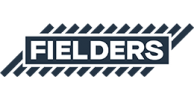Guide to range of cooling savings
Total Predicted Cooling Savings*
|
Year 0
Upfront cooling equipment |
Year 5 |
Year 10 |
Year 20 |
| Low Saving |
|
|
|
|
|
|
| High Saving |
|
|
|
|
High and low cooling savings are predicted based on independent building studies and assumptions noted below.
Based on the input parameters above a saving in the result is predicted. Note that due to the simplicity of this model and complexity of buildings* your cooling savings could lie anywhere within the low to high range.
Calculation Details
Cool Energy Savings
Several independent studies† have shown cooling energy savings ranging from around 10 to 50% (low to high), with an average saving of about 20%; when changing the solar reflectance of a roof from dark and absorbent to light and reflective, representing a total solar reflectance change (TSR) of about 60% (or 0.60).
You are comparing COLORBOND® Coolmax® steel (TSR 77%) with (TSR %). This will result in a TSR that is % () higher.
Scaling the independent studies based on TSR change:
| Low Saving |
% (/60 × 10) |
| Average Saving |
% (/60 × 10) |
| High Saving |
% (/60 × 10) |
It has been assumed that on average a commercial building consumes 167 kWh/m² p.a. at $0.30/kWh resulting in an annual cooling bill for the building of $12.53/m², assuming ¼ of the energy is used for cooling.
The range of predicted savings is:
| Low Saving |
$/m².pa (% × 12.53) |
| Average Saving |
$/m².pa (% × 12.53) |
| High Saving |
$/m².pa (% × 12.53) |
Cool Equipment Savings
The cooling equipment saving is calculated based on a reduced cooling load and an assumed cooling equipment value of $930/kWr. (Reference Ecolibrium December 2010)
The reduced load is calculated using a steady state model based on thermodynamic fundamentals.
The reduced load is calculated for a representative hot sunny day (I=1000 W/m², Tin = 22°C, Tout = 34°C, wind = 0.5m/s) assuming an roof insulation value of
The reduced cooling load from COLORBOND® Coolmax® steel compared to is predicted to be Wr / m².
Potential predicted cooling equipment saving = $ / m² (/1,000 × 930)
Total Predicted Cooling Savings
Total Saving = Upfront cooling equipment + Cooling saving × Years
|
10 Year Saving |
$/m² × conditioned floor area (m²) |
| Low |
$/m² ( + × 10) |
$ |
| Average |
$/m² ( + × 10) |
$ |
| High |
$/m² ( + × 10) |
$ |
Based on the input parameters:
Your indicative saving is predicted to be in the result.
The refined 10 year savings range is predicted to be between:
| Predicted Saving |
$/m² |
to |
$/m² |
| Total 10 Year Saving |
$ |
to |
$ |
This refined range is intended to provide a guide for consideration of using COLORBOND® Coolmax® steel for your project and inclusion in further energy modelling to obtain more accurate predictions specific to your building. Note that due to the simplicity of this model and complexity of buildings your cooling savings could lie anywhere within the low to high range.

